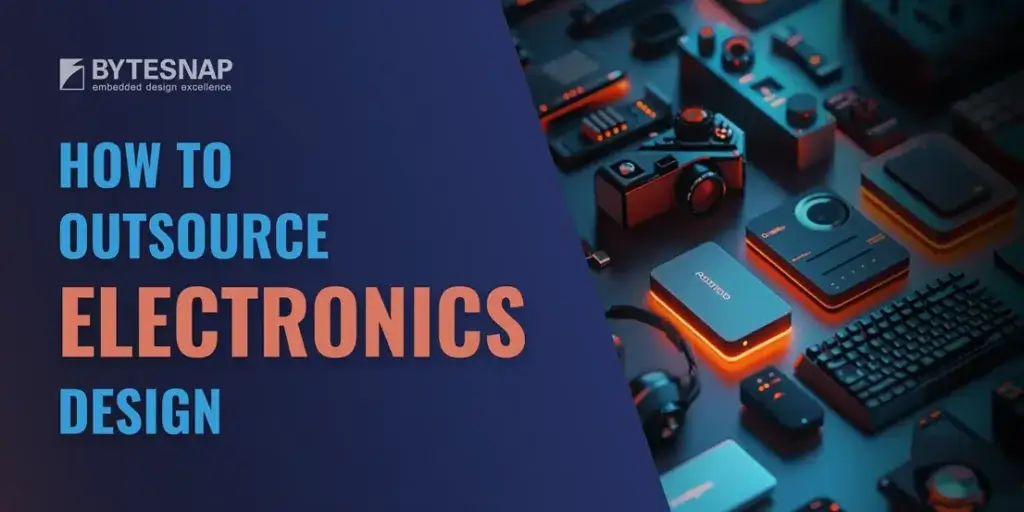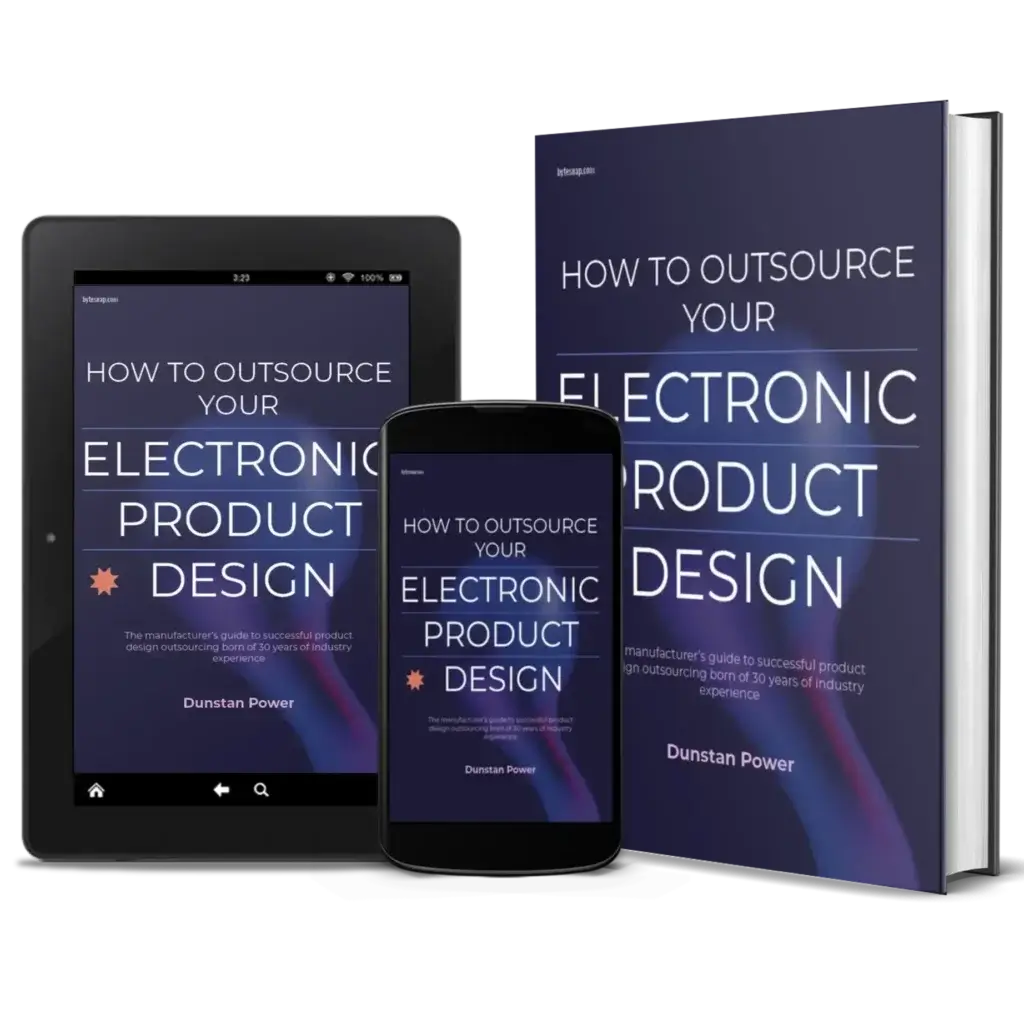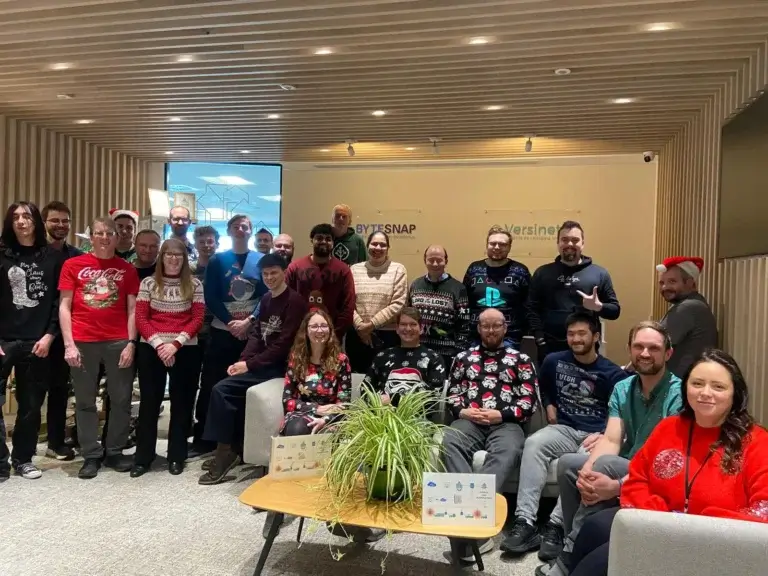Get the Guide: How to Outsource Electronics Design
What are the main issues to avoid when you outsource electronics design?
What’s the best way to avoid product devevelopment pitfalls, while managing time and costs?
Here, we bring you the reality of what it takes to outsource electronics design.
Follow these 5 tips to outsourcing electronics design successfully:

Top tips
- Know your end goal
- Define your acceptance criteria.
- Have all the documentation the outsourcer needs at project start.
- Have clear, structured communication with your outsourcer
- Find the balance and delegate down project management
What are the advantages of outsourcing electronics design?
Outsourcing electronics design offers cost savings, access to specialist knowledge, faster time-to-market, scalability, reduced overhead, and risk mitigation. By leveraging external electronic design services, companies can focus on core competencies, innovate quicker, and adapt to market demands efficiently.
Let’s go through the tips in greater detail.

1: Know your end goal when outsourcing
Before you start anything – know your product, your market, and your goal.
In simple terms, designing a product is like a journey – with a beginning, middle and end.
Before even starting the development process, be clear on what your end target is.
For instance, if you’re designing medical devices, you should have a good idea of the quantities the final product is going to sell at.
When beginning a project – even though these are always approximations and guesses – you should already have asked yourself:
“Is this a 10,000 unit a year product – low-cost, low-risk, disposable?
Or is this a 500-a-year premium product, which has to be ultra-reliable, even safety-critical?”
People sometimes get mixed up between the two; they either are trying to apply low-cost electronics into that safety, critical function/ reliable function, or they’re conversely over-engineering a lower-cost product.
This is where it’s vital to be certain of:
- what your end-market is
- the likely volumes of product and
- what the genuine, specific requirements on that market are
These shouldn’t be coloured by your own prejudices or perceptions, but need to be actual. For instance, what are the industry standards and quality standards that the product needs to meet?
Some of our customers are incredibly well set up and know their market inside out (some have been in their particular vertical for decades).
While others have very good forecasts and know exactly what the target bump has to be. They’re aware that if they go over a certain Bill of Materials (BOM) price, their product won’t be viable.
Conversely, we have yet more customers who are startups with an innovative product – akin to the TV show Dragon’s Den. It’s much harder for them to know necessarily what the market is going to be.
Nevertheless, there are still areas that require careful consideration:
- similar products currently available
- what problem your proposed system/product is solving
- estimation of market size, and to allocate realistic numbers.
At ByteSnap, we’ve done decades of product design in several sectors including industrial, medical, marine and aftermarket automotive telemetry.
Avoid over-engineering
Over-engineering is definitely a pitfall to avoid.
Remember, you also need to meet whatever standard is appropriate for your product. Be sure to plan for this very carefully.
Define where your product is in terms of standards, quality and target price.
2: Define your acceptance criteria
Having a clear definition of your acceptance criteria is particularly important when outsourcing.It’s essential that the company you outsource to knows when the product is completed and meets the required standard.
It’s also crucial that you – as the outsourcer’s customer – know exactly when your product has been designed correctly and meets your specifications.
The outset of the project is when you should be laying out how you’re going to test the end-products, and what the acceptance criteria are, in order to say, “Yes, that project is done and the contract is complete.”
It’s an essential component of the product design process that you clearly state early on in the project, “Right, this is what they device/system needs to do.”
Clear specifications are essential
Specifications must be well-defined. An “I-just-want-it-to-work” attitude simply will not do.
If your acceptance criteria are fluffy and open-ended, they won’t work for you nor the outsourcing company, because you’ll be repeatedly frustrated with telling them, “this doesn’t quite meet what we want.”
This is the fastest route to slipping timescales.
In product development, time is your enemy. You do not want your outsourcer to slip time-wise.
Acceptance criteria case study
A recent example is where a client told us, “We’ve had some work done for us by another company on an automotive communications bus, and we’re trying to reprogram microcontrollers on the bus, but they keep failing to reprogram.
“We want you to be able to do 500 downloads of successful reprogramming of 10 microcontrollers on this bus in succession. When you’ve done 500 in succession, we will sign it off as passed, because currently, 1 in 10 fails.”
That’s a very clear test.
We can do 500 here, we can go back to them and say, “We’ve done 500, they all pass. We know we fixed it; we know that it works.”
Therefore:
- They know we’ve done the test.
- They could also do 500 themselves.
- They can reproduce the tests themselves.
All these are acceptance criteria.
Sometimes, you can be present for the acceptance tests. The outsourcer can visit you onsite and go through the test or the acceptance plan with you.
That’s what we did when we were designing electric vehicle charge points for the London Olympics. We were on site plugging cables and swiping cards.
The other alternative would have been to have tested them at our base or have shipped prototypes to the customer for testing.
Do not miss this step; in order to know when the project is finished and tested you must have clearly defined acceptance criteria.
3: Have all the documentation the outsourcer needs at project start
At the start of the project development, get the plan from the outsourcer. From there, find out when you need to deliver items to your outsourcing company, rather than it just being about them sending parcels to you.
For instance, if you’ve got a separate company doing the mechanical design (very common), or you’re having to book test houses, you may need to send components/parts out to various locations at specific times.
Get that plan from the outsourcer. Make sure that you’re delivering, and you’re not giving your outsource development team a reason to be slipping.
4: Have clear, structured communication with your outsourcer
The next thing we’ve found works very successfully is to have clear, structured communication.

Even though your outsourcer might be in another country, it helps greatly just to have a weekly conference call, depending on the speed and intensity of the project.
Be wary if your outsourcer says there’s nothing to report; having nothing to say implies there’s been no progress. If things are happening and the design project is moving forward, there should always be something to say.
Weekly calls for project focus
Weekly conference calls keep your outsourced engineering team focused and also flag up where you need to provide information to them.
Sometimes, there are situations where both sides are waiting for the other to do something else – and neither side is aware of that.
In our experience, a weekly call is highly beneficial.
It’s important to keep the lines of communication open, regular and clear.
Emails suffice up to a point, but when people are sometimes copying or not copying other people, it becomes disjointed.
You need regular, scheduled Teams or Zoom calls. That doesn’t stop you using other communications outside of those calls. However, frequent calls will result in you getting regular feedback.
If you have design teams at both ends, keep those calls going, even if some people are on holiday. They can be shorter calls – e.g., five minutes – but will mean that you keep things on track. You will be able to spot, much more quickly, where things are slipping and why.
The projects where we’ve had the weekly calls, in my view, have been projects that have gone the most smoothly.
5: Find the balance and delegate down project management
How do you find that all-important balance when outsourcing electronics design? By delegating down.
For small projects, I delegate to my senior engineers and take a light-touch approach. I don’t tend to get deeply involved; sometimes, I’ll take on an Account Manager role, talk to customers, and various tasks like that.
My senior engineers do an excellent job of managing smaller projects and progress calls.
Delegation is key. There’s a good reason for this. Not everyone has to be on each weekly call.
A classic example is where we’ve been on international conference calls, dealing with global team. A quarter of an hour of the call can be taken up with people dialling in and joining.
Eating into people’s time.
This would be followed with a lot of backslapping, “Oh yes, we’re doing really great here…”.
As you might expect, those calls were very low-quality.
Instead, you’ll find it more constructive and have better results with a regular call.
At the beginning of the project, it’s best to have everyone in the first call.
Be selective
Don’t have people on the call who don’t need to be on there.
For instance, a typical project starts off very hardware-centric and then goes very software-centric. That’s because the hardware gets designed, delivered to the software team, and then it’s all about software team getting all that code written and finished.
Every project needs a PM. If it’s a small project, it may be that the PM is an engineer and not necessarily a separate person.
The Project Manager (PM) is ultimately responsible for running the project and therefore needs to be on each weekly call.
It’s essential for the PM to stay in touch of what’s going on.
Otherwise, things can drift off very, very quickly into the abyss.
Outsource Electronics Design – Content Upgrade
Get the full guide on how to outsource electronics product design successfully.
In our How to Outsource Electronics Design e-book – get all 12 best practice steps – including tips on intellectual property, prototyping and more – to take on your development journey to ensure you make the best of your time and budget – and accelerate to market.
Download now:





